Review: Waves CLA Classic Compressors & Eddie Kramer PIE Compressor and HLS EQ
As the necessary adaptations and skills for producing and mixing in the box have become more and more ubiquitous, users are looking for more unique digital tools which carry over the unique sonic personalities of their analog counterparts. Personally, I’m always on the lookout for new plug-ins or virtual instruments that will give the end listener as much of an organic and analog aural experience as possible.
Any modern engineer is of course familiar with Waves who have been at the forefront of plug-in design from the very beginning of the DAW age. Many of the Waves plug-ins have become modern classics in their own right. Of late, Waves has shifted a lot of attention towards the trend of modeling classic analog gear. Within the last few years, we’ve seen them introduce emulations of the de-facto API, SSL, and Neve analog pieces that engineers and producers have used for decades.
Continuing that trend Waves has recently introduced two new lines of classic emulations:
In collaboration with the luminary engineer and mixer Chris Lord-Alge, Waves has modeled four of his personal go-to compressors:
1. The CLA-76 “Bluey,” modeled after the silver-face blue-stripe revision B version of a famous solid-state FET based compressor from the 1960’s.
2. The CLA-76 “Blackie,” modeled after a later version (revision D-LN) of a solid-state FET based compressor from the 1970’s
3. The CLA-2A, modeled after a famous tube opto-compressor.
4. The CLA-3A, modeled after a well-known solid-state opto-compressor
Kramer PIE Compressor and HLS Channel
In collaboration with legendary engineer/producer Eddie Kramer, Waves offers modeled versions of:
1. The PYE compressor. A solid state compressor manufactured in the 1960’s by Pye Telecom, an English company. Used predominantly in Olympic Studios in London during the 60’s and 70’s.
2. A Helios channel EQ, complete with input amplifier modeling. Based on the second generation silver-face channels, including the rare and original Lustraphone transformers.
Waves has a an extensive 8-12 month long process of testing and modeling each hardware unit in order to capture all of its characteristics before delivery to the end-user. This modeling process is exhaustive, and presents many challenges. A simple emulation of the circuit design is not enough, given that the inherent personality of each unit is exemplified by the non-linear response of each of its component parts.
Waves goes to great lengths to model these distortions and idiosyncrasies in a way that is both convincing and CPU friendly.
Obviously, given the continuously variable nature of a piece of analog hardware, a tremendous amount of data can be generated running different types of signal through a hardware unit, and not all of it can be reproduced. However, as a user will not typically employ the full dynamic range of a unit, it is easier to model a “sweet-spot,” or a set scale of amplitudes.
Once this data is collected, it is then fed into a complex harmonic distortion algorithm that can interpolate those unique response characteristics across the full dynamic range of the unit. It sounds complex, and is, but thankfully, better heads than mine are developing this software, and so I am left to just twist the knobs and enjoy the results.
With that said, over the last couple of months I’ve been fortunate enough to add these plug-ins to my ever-expanding arsenal of vintage emulations and I must say that these have become some of my favorite tools to use. They behave as you expect the original hardware models to, and offer excellent emulations of the overt eccentricities that engineers have always found so appealing about them. Additionally, there are very CPU friendly and can be used liberally without too much concern for processing power.
CLA-76
Waves offers two flavors of the same compressor topology in this plug-in: “Bluey,” based on an earlier (blue-stripe revision b) version of the 1176, and “Blackie,” based on the later revision D-LN iteration of the same model. Both are exact models of two of Chris Lord-Alge’s favorite units.
They offer the same familiar interface with input and output levels, variable attack and release times, compression ratio (4:1, 8:1, 12:1, 20:1, ALL), metering preferences, and a compression bypass switch.
Waves also adds analog noise and hum, which can be bypassed completely or set to create hiss and a very low level DC hum at either 50 or 60 Hz; and depending on your nationality I suppose, you may find one or the other more familiar.
The major differences between the two compressors are most easily perceived in levels of distortion and noise. “Bluey” distorts more easily than its counterpart, yet has a lower level of hiss than “Blackie” when the analog section is engaged. Conversely, the 50-60 Hz hum is virtually inaudible in “Blackie.”
I should emphasize that this hum emulation is very subtle in both cases overall, and you certainly would not find it distracting should you choose to leave the analog section engaged. If anything, I found it pleasing as it reminded me of days spent behind an analog console.
Ironically, after so many years working digitally, it seems I now miss the higher noise floor I used to spend so much time trying to diminish. As with their hardware counterparts, these compressors have very fast attack times (slowest setting is 1 ms, fastest up to 50 microseconds) and thus lend themselves well to material in which a more aggressive approach to controlling dynamic range is in order.
Given the aforementioned differences, it is up to the user to decide what works best in a given situation. I have more often found myself attracted to using the Bluey version of the plug simply because of the attitude it imparts.
Inserting this plug on a lead vocal or drum room mics and engaging the “all” button instantly gives an explosive and in-your-face quality that is at once familiar and very exciting, and radical changes to the resulting sound can easily be accomplished with very subtle adjustment of the input level.
On the other hand, you can easily back the ratio and gain off and have a more subtle version of the same thing. Of course, this is what one expects from a compressor, but I was struck at how musical it was, and how many different colors were achievable in quite an overt way. I found Blackie a little more useful in situations where I wanted a lot of control over the sound, but with a little less coloration; bass guitar being a good example, where often one wants to employ a healthy amount of compression without adding too much fuzz or loss of low end to the signal.
I often used Blackie on piano and vocals as well, offering an audible compression effect without compromising a clean signal and totally eliminating all dynamics of the source.
CLA-3A
This is a model of a famous solid state opto compressor, first introduced in the early 1970’s. It offers a very simple control set: An input level control, a peak reduction control, a switch that lets you choose between limiting and compression, a metering selector switch, a high frequency control, and the added feature of the Waves analog controls which are detailed in the above description of the CLA-76.
The high frequency control deserves a little bit of extra attention: It is used to adjust how the compressor responds to certain frequencies. When set to “flat” the compressor applies gain reduction to all frequencies equally. As the control screw is turned counter-clockwise it begins to apply less and less gain reduction to frequencies below 1 kHz.
This is very useful for situations in which too much low end information is affecting the way higher frequencies are being compressed, useful when there is lot of lowend-air in vocal that needn’t be filtered out, but affects when and how hard the compressor attacks.
The CLA-3A obviously does not offer a variable attack and release time, and while being relatively quick with an attack time of 1.5ms, does not match the wickedly fast attack of the CLA-76. It offers extremely transparent operation, and is perfect for vocals and instruments like electric guitars. However, my favorite application for this style of compressor has always been drums. It seems to have the perfect inherent attack and release time for them, and when applied, instantly provides you with a nicely emphasized slap as well as a lower mid-range thud that sounds fantastic.
[A word from Waves product manager Mike Fradis: “Although the attack and release times do not offer control, by the nature of an opto detector, it creates a program-dependent Attack and Release time that take into account the history of the program played, so hot signals will have faster attack and longer release times while lower signals enjoy slower attacks and faster release. This is the Magic of opto compressors.”]
Once again, the CLA-3A offers an excellent emulation of the hardware unit, offering a subtle harmonic distortion and a nice smooth compression. It has often found a place in my recent mixes, tapping the tops of the snare drum.
CLA-2A
This is a model of perhaps the most ubiquitous tube opto-compressor in the engineering world. First introduced in the early 60s, this compressor uses an opto cell as a peak detector and features a unique 2-stage release characteristic.
This emulation offers all the same controls as the original, along with the Waves analog control options.
At the time of its introduction, this compressor was well-loved for its very transparent operation, with relatively little harmonic distortion. Of course today, in the digital world, any harmonic distortion is a coveted character flaw, and is far more conspicuous than it once was.
Like the original, the CLA-2A offers a very transparent compression curve (around 3:1), as well as a slow attack time (around 10ms). It will also offer a nice warmth and even a slightly edgy distortion when driven hard. Of course, the 2A lends itself very well to vocals and other materials where post transient control is desired.
I have most often used these compressors on vocals and bass. In this virtual incarnation, the 2A performs admirably well in this capacity, imparting a subtle and controlled smoothness to vocals, as well as a nice warmth when driven hard. When used on bass, you can go from very smooth to tight with a slightly distorted edge, just like the hardware counterpart.
Kramer PIE Compressor
This was the only plug-in in this review with which I don’t have extensive experience with the actual hardware unit. So I won’t be able to offer a comparison, but rather an impression of the plug-in itself as a standalone entity.
The controls are standard compressor fare: a threshold incremented in 2 dB steps, an output gain control, release options from 100 to 3,200 ms, and 5 different compression ratios (1:1, 2:1, 3:1, 5:1, and limit). Additionally, you have the familiar metering options as well as the Waves analog options.
The first thing you notice when instantiating this plug-in is the noise. It is actually loud enough to be distracting in some quieter passages. That said, it is of course, a matter of taste as to whether to leave it switched on or off. Given that it’s an exact model, one can assume that the hardware unit is actually this noisy, so for authenticity’s sake, it is available should one desire.
In use, I found this to be a wonderful sounding and flexible compressor. Depending on the release time you choose it can be either conspicuous or transparent. It reminded me of a lighter-weight Neve 2254, that is to say it offers a similar control over program material, but with a little less of that Neve heaviness.
I found myself using it on acoustic pianos — it gave them a nice extra weight with more pronounced attack. It definitely added some nice transient squash-and-pump without sounding too aggressive. However, I found it great for drums as well, I’m a big user of parallel compression schemes, and I used this compressor very successfully in this manner; putting the unit in limit mode with the fastest release time really does a great job of getting that “big” drum sound with some nice squashed transients and plenty of room brought in, mixing that signal back in with a dryer drum kit got me some great results.
Ultimately, this is a great sounding compressor with a lot of potential uses, certainly not a one-note device, and definitely worth investigating as an additional flavor to add to the arsenal.
Kramer HLS Channel
Last but certainly not least is the HLS channel — this was a serious favorite and I am using it a lot! Modeled after a classic Helios channel there are three bands of EQ: a high end boost/cut at 10 kHz in 4 db steps, a parametric boost/cut mid-range control with frequency selections between 700 Hz and 6 kHz, and an interesting bass control which offers boost at set frequencies between 60 and 400 Hz, or a 5-15 dB cut at 50 Hz.
The mid control offers a switch that designates whether the pot will cut or boost the selected frequency. These are some slightly unusual controls, but take very little adaptation. Additionally, there is a wonderful input amplifier model with a mic or line impedance selector. This does not add any gain, but allows you to dial in more or less harmonic distortion.
The remainder of the controls are made up of input and output gain, the waves noise generating section, and metering controls.
This is a wonderful EQ, and I had success with it on virtually everything I tried it with. The high end is fantastic for a plug-in and has an effect similar to that of the Neve 1073, that is to say that a little goes a long way, and it instantly cleans up a muddy source without any harshness to speak of.
The midrange is just as kind and natural sounding, you don’t have to work too hard to get a good result that doesn’t sound “EQ’d.” The same goes for the bass controls. In use, this was fantastic for adding some smooth high-end sparkle to a dark vocal, or bringing out some nice low end punch on a kick drum, or even the entire drum kit for that matter. The input amplifier control is fantastic, and if you are using it on several components of a mix, you’ll definitely start noticing a thicker, gluier, and more analog character to the overall sound. The HLS is a new favorite and I’m very happy to have discovered it!
In Conclusion…
Overall, I really have enjoyed using these plug-ins — they have become indispensable tools in my plug-in collection. All I have to do to be reminded of this is imagine how successfully I’d be able to recall any mix I’ve done over the past couple of months without them…which I don’t want to imagine. Waves has done a wonderful job in the design and the sonic results speak for themselves, and at this price you get a good amount of bang for your buck, especially given the total cost of the actual hardware.
Special thanks also to Mike Fradis, product manager at Waves who answered lots of my questions about the Waves development process.
I strongly recommend demoing the plug-ins from Waves, which can be done at no cost, and investigating for yourselves. It will be well worth the effort! Click to demo/purchase the CLA Classic Compressors (right now for TDM: $996; Native: $498) and/or the Eddie Kramer PIE Compressor and HLS Channel EQ ($540 for the TDM Combo; $270 for the Native Combo but they’re also available individually.)
Bo Boddie is a Grammy winning engineer/producer and composer who has worked with Santana, Everlast, Korn, Reni Lane, and many others. He is currently beginning work on Imperial Teen’s second release on Merge Records.
Please note: When you buy products through links on this page, we may earn an affiliate commission.







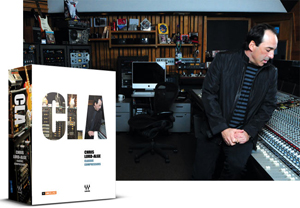
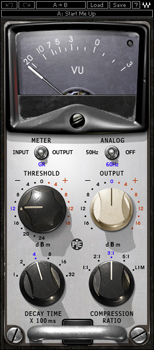
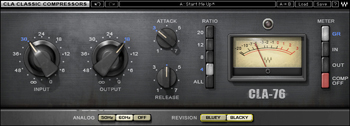

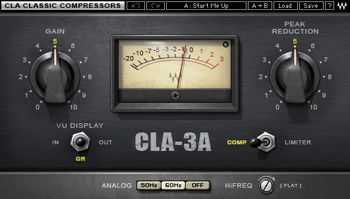
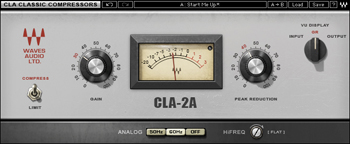
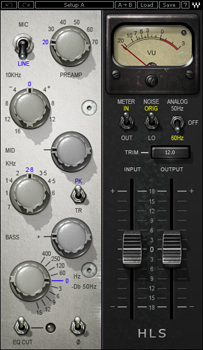
Huckrosenberg
March 7, 2011 at 10:54 am (13 years ago)Well, to me Waves plugins are just as good as any other plugin. Way overhyped on the market. Interfaces are the best part of those plugs.
Arbiteruk
May 8, 2011 at 1:57 pm (13 years ago)Great that you have an opinion but many believe the plugs are great. Why would you post something so banal and subjective after a nicely worded review?